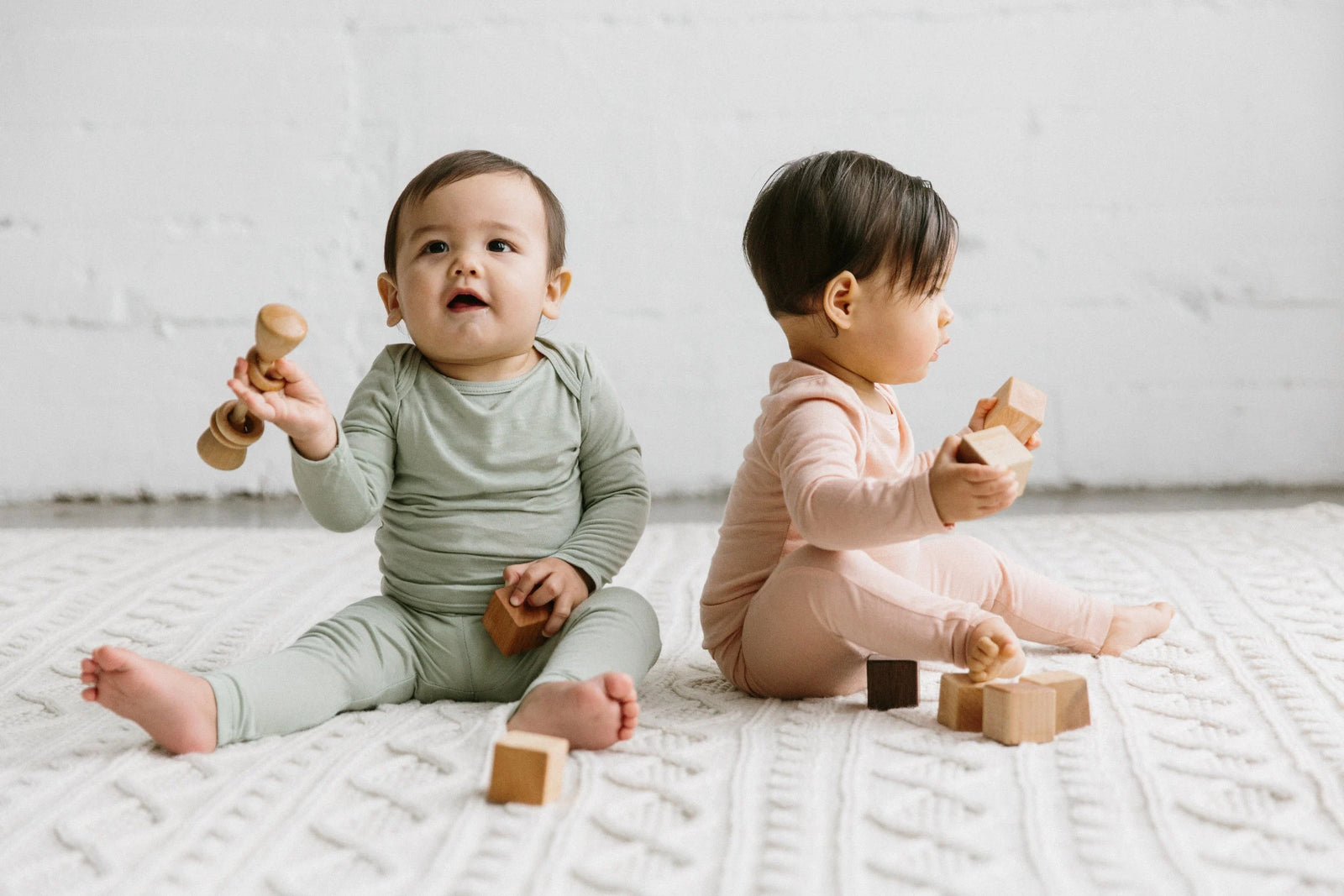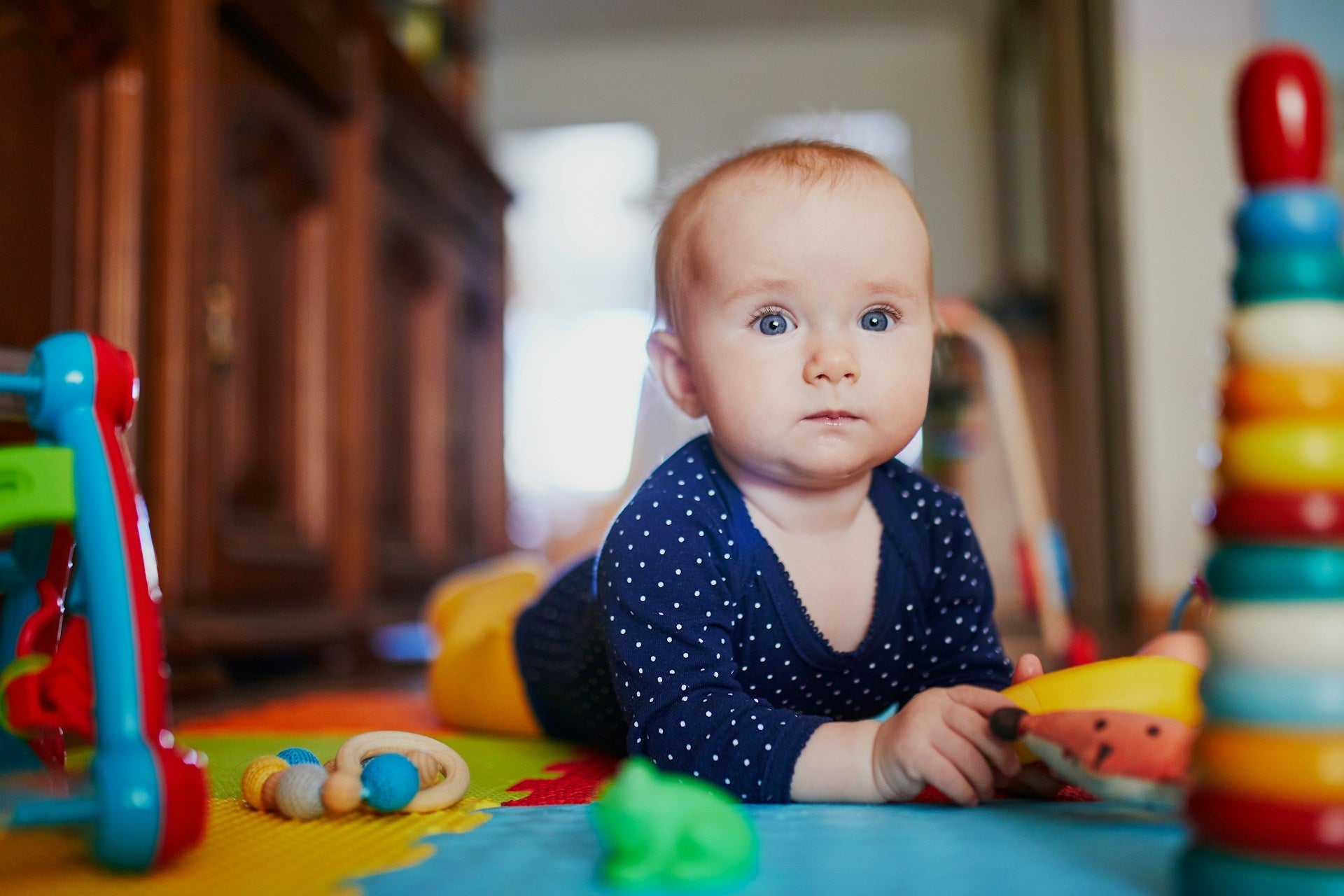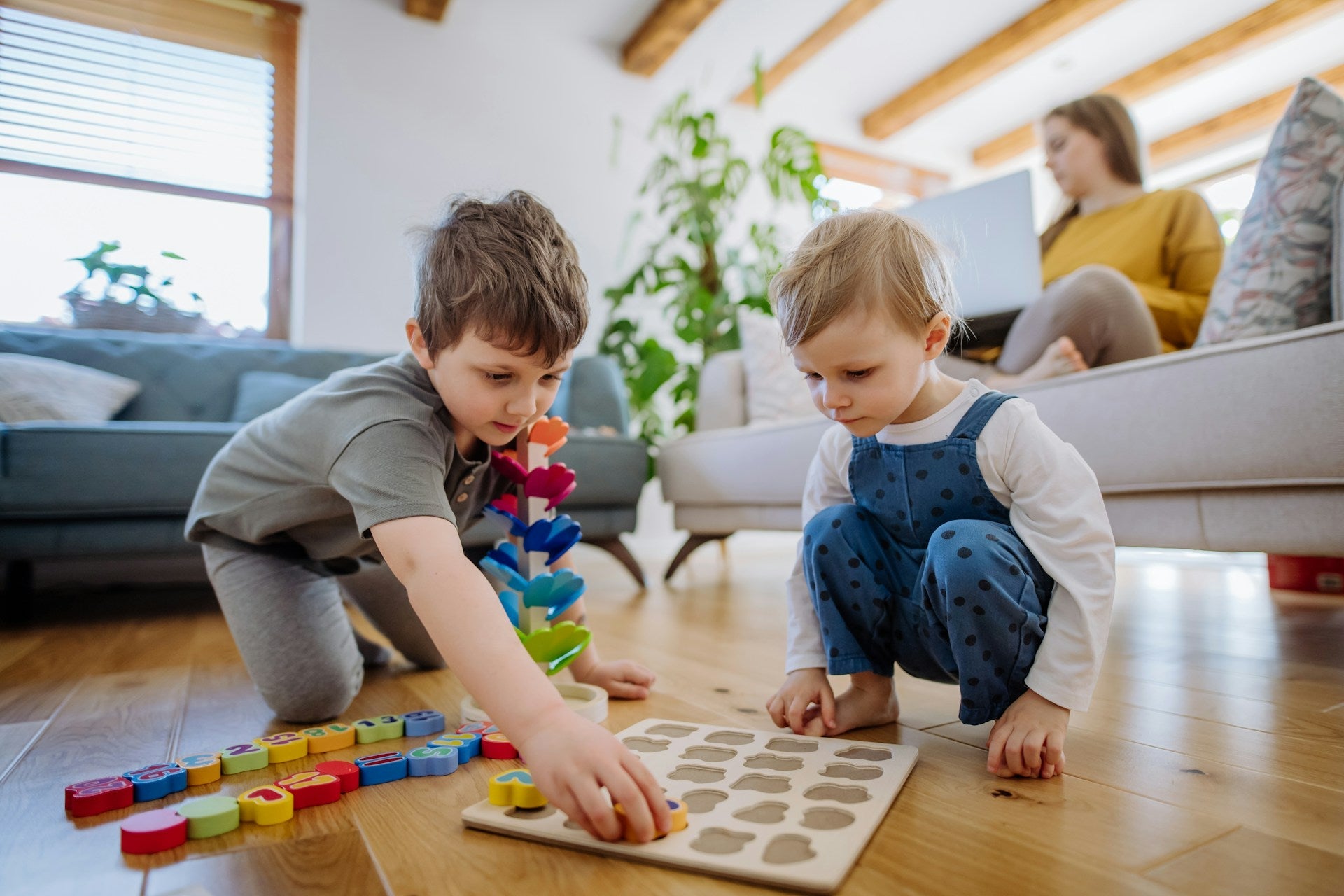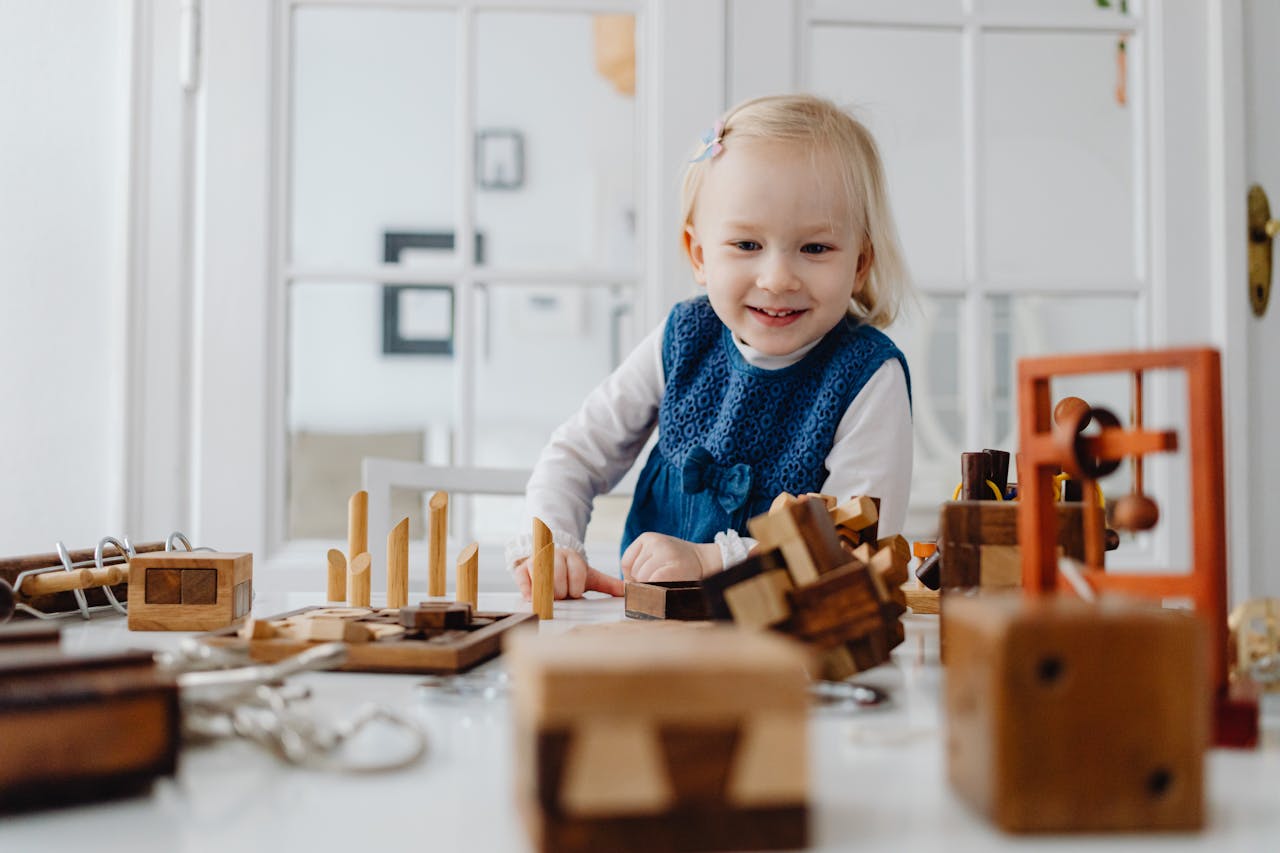The Montessori Wooden Hand Rattle: A Timeless Tool for Infant Development

Dr. Maria Montessori believed "the hands are the instruments of man's intelligence." From birth, babies use their hands to develop themselves further. Their hands offer comfort, sensory experiences, and, most importantly, the ability for them to explore. They may not be able to walk at birth as other mammals do, but they can use their hands to gain knowledge of the world around them, and as this knowledge increases, they use their hands in new and exciting ways. Fortunately, Dr. Montessori took the guesswork out of how to support this development by creating engaging materials designed with age-appropriate stimuli that offer challenges without overstimulating.
One of the Montessori materials that supports infant development is the wooden hand rattle. The hand rattle is a familiar toy in Montessori circles and is beginning to gain popularity in more mainstream groups as well. This multipurpose toy is made of wood, a common theme throughout Montessori materials. Dr. Montessori preferred natural materials over artificial ones because she felt they gave children a deeper understanding of the world and kept them in touch with nature. As a bonus, wooden toys are non-toxic and more durable, and their simplicity makes them a beautiful addition to any environment. The hand rattle consists of a small wooden dowel with rings and two large beads capping the ends. It is usually about four to five inches long, which is (you guessed it!) the perfect size for your baby to hold.
Suppose you have ever seen a baby holding a rattle. You know that they love to shake the rattle back and forth and listen to its sounds. These sounds are how your baby learns about cause and effect and their role in the environment. This might be one of their first introductions to learning that what they do has power. When first introduced, your baby may only accidentally shake the rattle as their movements are more reflexive and less intentional. However, once they figure out that they can cause the rattle to make noise by moving their arm or hand, they envision and execute a plan. This is a complex concept for young babies, but they grow and develop quickly, especially when their environment is prepared to meet their developmental needs.
While the rattle can fit in one hand, it is designed to easily be transferred between hands, engaging the crossing of the midline. This skill encourages both sides of the brain to work together and is promoted by pediatricians and therapists alike. The light weight of the rattle allows the baby to practice grasping and releasing when it is placed near them on the floor. This toy also makes a great first teether, as babies can independently bring the rattle to their mouth to soothe sore gums. The large wooden beads on the end are great for mouthing without being a choking hazard.
This toy can be introduced to your baby as soon as they start grasping objects (usually around 2 to 3 months) and can be enjoyed for as long as your baby likes. This is a great toy to lay passively in your child's movement area for them to discover. You may introduce it more intentionally by showing your baby the sound it makes and then letting them explore it. No matter how you use it, it's sure to be a hit with your baby.
One of the Montessori materials that supports infant development is the wooden hand rattle. The hand rattle is a familiar toy in Montessori circles and is beginning to gain popularity in more mainstream groups as well. This multipurpose toy is made of wood, a common theme throughout Montessori materials. Dr. Montessori preferred natural materials over artificial ones because she felt they gave children a deeper understanding of the world and kept them in touch with nature. As a bonus, wooden toys are non-toxic and more durable, and their simplicity makes them a beautiful addition to any environment. The hand rattle consists of a small wooden dowel with rings and two large beads capping the ends. It is usually about four to five inches long, which is (you guessed it!) the perfect size for your baby to hold.
Suppose you have ever seen a baby holding a rattle. You know that they love to shake the rattle back and forth and listen to its sounds. These sounds are how your baby learns about cause and effect and their role in the environment. This might be one of their first introductions to learning that what they do has power. When first introduced, your baby may only accidentally shake the rattle as their movements are more reflexive and less intentional. However, once they figure out that they can cause the rattle to make noise by moving their arm or hand, they envision and execute a plan. This is a complex concept for young babies, but they grow and develop quickly, especially when their environment is prepared to meet their developmental needs.
While the rattle can fit in one hand, it is designed to easily be transferred between hands, engaging the crossing of the midline. This skill encourages both sides of the brain to work together and is promoted by pediatricians and therapists alike. The light weight of the rattle allows the baby to practice grasping and releasing when it is placed near them on the floor. This toy also makes a great first teether, as babies can independently bring the rattle to their mouth to soothe sore gums. The large wooden beads on the end are great for mouthing without being a choking hazard.
This toy can be introduced to your baby as soon as they start grasping objects (usually around 2 to 3 months) and can be enjoyed for as long as your baby likes. This is a great toy to lay passively in your child's movement area for them to discover. You may introduce it more intentionally by showing your baby the sound it makes and then letting them explore it. No matter how you use it, it's sure to be a hit with your baby.








